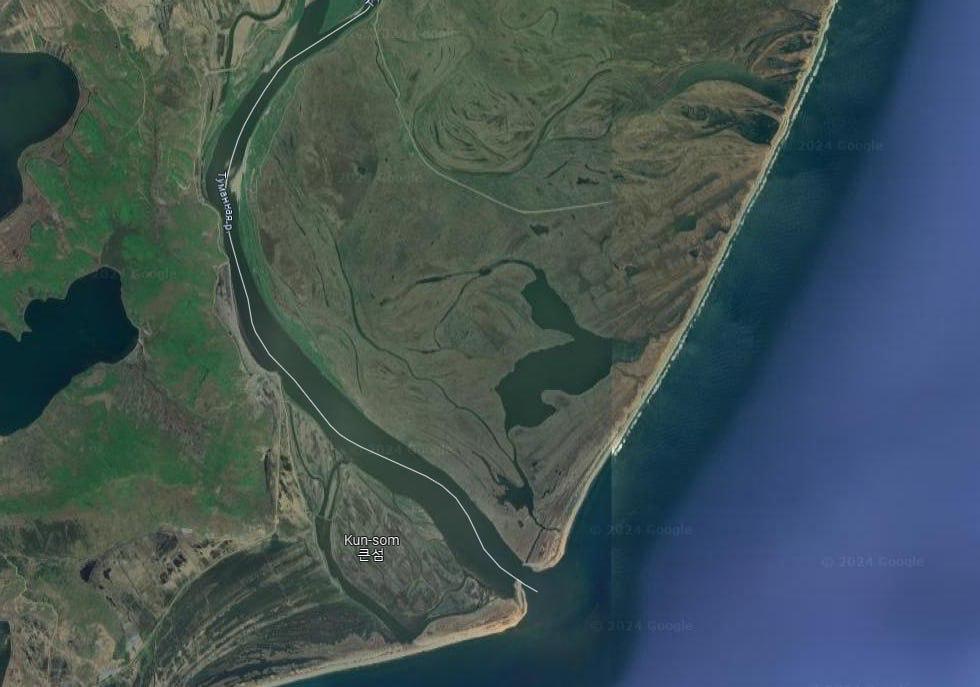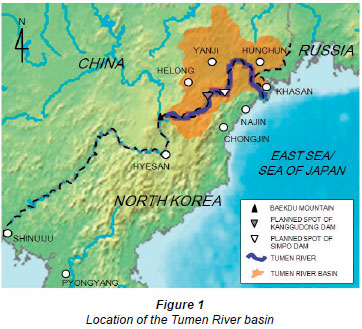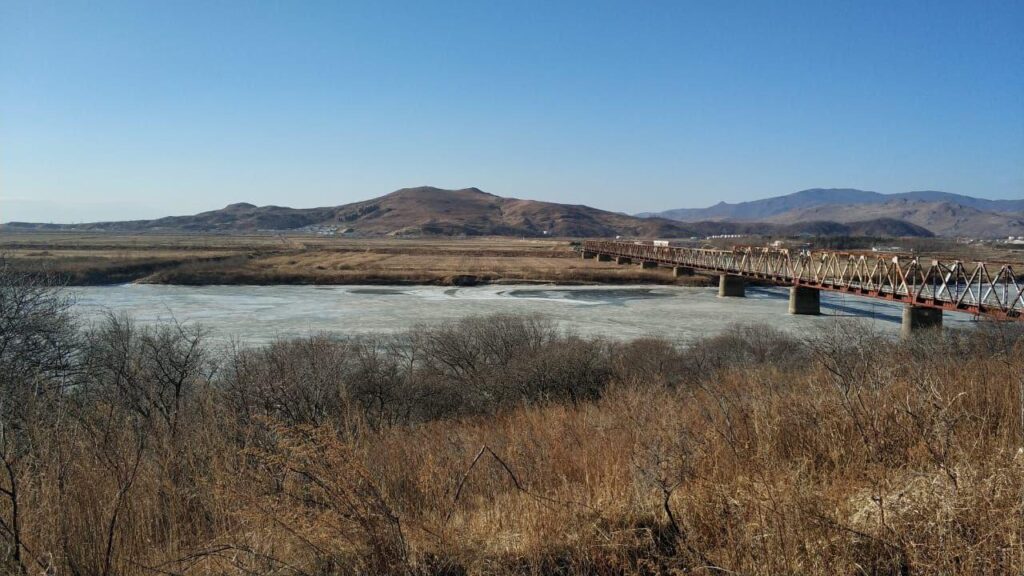
The Tumen River, forming a natural border between Russia, China, and North Korea, has become a controversial focal point in international discussions. Recent developments have seen a surge in Western commentary, highlighting China’s ambitious plans to develop the river for its economic and strategic benefits. However, there is growing concern that the Chinese government is prioritizing its own interests over the significant environmental costs involved in this project.
The Strategic Ambitions
China’s interest in the Tumen River is driven by its strategic need to secure a direct route to the Sea of Japan, enhancing trade efficiency and military reach. The northeastern Chinese provinces of Jilin and Heilongjiang, historically isolated and economically depressed, stand to gain substantially from this development. Estimates suggest that the river could generate up to $1 billion in annual profits, providing a much-needed boost to local economies and opening new trade opportunities (The Diplomat).
Despite these economic incentives, the Chinese government’s focus appears to be more on expanding its geopolitical influence rather than ensuring sustainable development. The historical agreements from 1991 and 2011 between China, Russia, and North Korea outline the framework for Chinese ships to navigate the river. These agreements reflect China’s long-term commitment to securing its strategic interests in the region, often at the expense of environmental considerations (The Diplomat).
A small and not very deep river with a width of 400 to 100 meters is unlikely to become a “magic wand” for the two provinces of Heilongjiang and Jilin with a population of about 60 million people. It will not be able to give an impulse to those provincial economies to jump high but, of course, it will enrich individual businessmen (The Diplomat).

Environmental Concerns Ignored
China’s track record on environmental protection amid rapid development is concerning. The country has faced numerous environmental crises resulting from prioritizing economic growth over ecological sustainability. Examples include severe air pollution in major cities, contamination of water bodies, and widespread deforestation (The Diplomat) (the deep dive).
- Air Pollution: China’s rapid industrialization has led to some of the highest levels of air pollution in the world. Cities like Beijing and Shanghai have experienced severe smog, leading to public health crises and global environmental concerns.
- Water Contamination: Industrial discharge and agricultural runoff have severely polluted many of China’s rivers and lakes. The Yangtze River, for instance, has suffered from significant ecological damage due to unchecked industrial activities.
- Deforestation: China’s expansive development projects have led to widespread deforestation, impacting biodiversity and contributing to climate change. The country’s Belt and Road Initiative has also been criticized for causing environmental degradation in participating countries.
The Tumen River, a vital ecological zone, is at risk of similar neglect. The river is home to diverse marine species and serves as a crucial stopover for migratory birds on the East Asian flyway. Large-scale dredging and increased shipping traffic threaten to disrupt these ecosystems, leading to long-term ecological damage. The river’s siltation, with depths ranging from 2-4 meters, would require significant and repeated dredging efforts, further exacerbating environmental degradation (The Diplomat) (the deep dive).
The Tumen River is not very deep water, constantly silting with a depth of 2-4 meters (up to 0.5 meters in the shallowest zones). Active cargo and passenger shipping there, as the Chinese side sees it, requires large-scale dredging. The drainage from land will not be able to compensate for the losses from changes in the channel, which will cause the entry of sea water far upstream and the death of all local fauna (replacement by marine forms) (The Diplomat) (the deep dive).
The ecological importance of the Tumen River extends beyond its immediate vicinity. The river supports a rich array of marine life and serves as a critical habitat for endangered species such as the Far Eastern leopard. The planned development would likely lead to habitat destruction, disrupting the food chain and affecting biodiversity across the region. The Khasansky Natural Park, a protected area of international importance created to safeguard migratory birds, would be particularly vulnerable to these changes (The Diplomat).
The Far Eastern Marine Reserve (Dalnevostochny Morskoy Nature Reserve) is located near the mouth of the Tumen River, which is located in Russia, and UNESCO confirmed the status of a biosphere reserve. This reserve is home to numerous species and provides a critical buffer against environmental degradation. The potential harm from extensive dredging and increased shipping traffic poses a significant threat to this globally recognized biosphere reserve (The Diplomat).
The Tumen River is one of the most important stopovers for migratory waterfowl on the East Asian flyway. Hundreds of thousands of birds will die due to the destruction of their usual habitat (Tumen River) and the inability to replenish their strengths during seasonal migrations in spring and autumn. Some species will disappear completely because the river is a place to raise their offspring. The mass death of birds will have the most negative impact on the entire biological diversity of not only the south of the Primorsky Territory (where, for example, the Land of the Leopard reserve is located), but also in other countries in the region.
Diplomatic and Environmental Accountability
While diplomatic agreements have laid the groundwork for the Tumen River development, there is a glaring lack of emphasis on environmental sustainability. The Chinese government’s approach has often sidelined ecological concerns in favour of rapid economic and strategic gains. Modern engineering and environmental management techniques that could mitigate these impacts are not being prioritized, raising questions about the genuine commitment to sustainable development.
International cooperation is essential to ensure that development proceeds without causing irreparable harm to the environment. However, the current trajectory suggests that China’s primary focus remains on maximizing its economic and strategic benefits, with insufficient attention to ecological preservation. This approach not only threatens regional biodiversity but also undermines global environmental efforts.


A different Perspective: A Vision for Ecotourism
Contrasting China’s ambitious plans, experts in river and land conservation and biodiversity envisions a more sustainable approach to the Tumen River’s development. They advocate for the river to be developed for smaller craft designed for ecotourism, emphasizing the preservation and promotion of the river’s biodiversity. This approach aims to balance economic development with ecological sustainability, ensuring that the river’s natural beauty and diverse ecosystems are maintained for future generations.
Ecotourism along the Tumen River would provide significant economic benefits to people who live along the river while minimizing environmental impact. By focusing on smaller, eco-friendly vessels, experts claim it will attract tourists interested in experiencing the river’s unique biodiversity and natural landscapes. This vision aligns with global trends towards sustainable tourism, offering an alternative model that prioritizes environmental stewardship alongside economic growth.
Conclusion
The development of the Tumen River presents a complex challenge that requires a balanced approach, integrating economic growth with environmental stewardship. However, the Chinese government’s apparent disregard for environmental concerns in favour of its strategic interests is deeply troubling. By prioritizing short-term economic gains over long-term ecological health, China risks causing significant environmental damage that could have far-reaching consequences.
In contrast, experts in river and land conservation and biodiversity envision ecotourism as a more sustainable path forward, emphasizing the preservation of the river’s biodiversity and natural beauty. A more responsible approach would involve comprehensive environmental impact assessments, strict pollution controls, and international cooperation to safeguard the river’s ecological integrity. It is imperative that the involved countries prioritize sustainable development practices and hold China accountable for its environmental responsibilities. Only through such measures can the Tumen River project achieve a balance between economic prosperity and environmental preservation.




